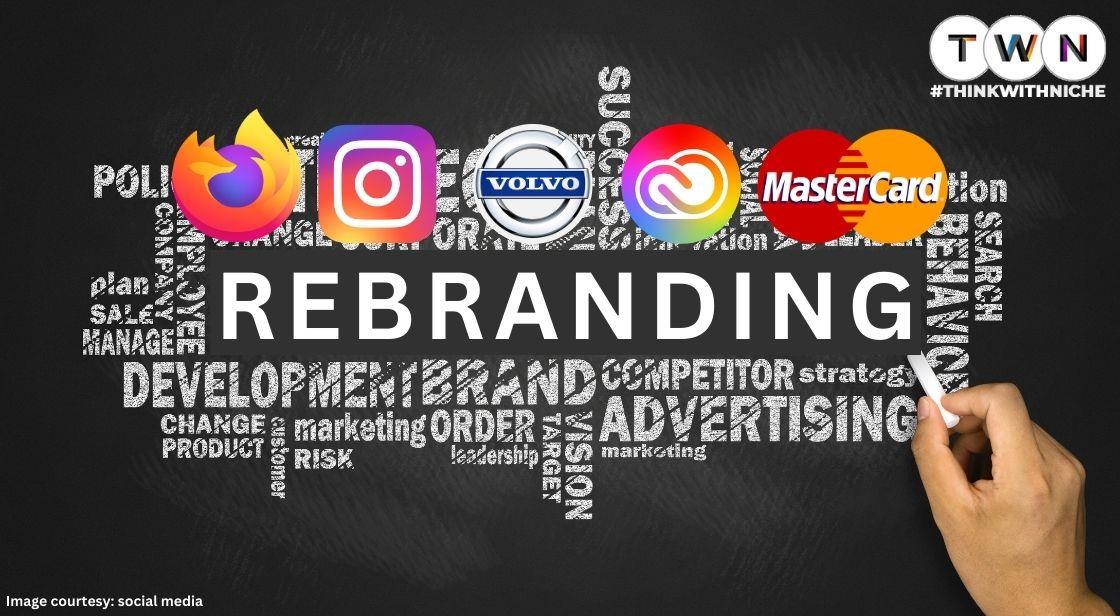Take Your Business To The Next Level A Guide to Rebranding

Blog Post
When you're ready to take your business to the next level, a brand rebranding is the perfect step. A rebrand can help you achieve new market positioning, product marketing, and USPs. It can also give your business a much-needed boost in visibility and credibility. Here are a few tips to help you get started:
1. Make a plan. First, you need to decide what you want your rebrand to achieve. Are you looking to improve your brand's image? Change your product's branding? Improve your customer base? Once you've determined your goals, it's important to develop a plan that will help you reach them. This involves analyzing your current branding strategy and tailor it to meet your new goals.
2. Get creative. Once you have a plan, it's time to get creative. Rebranding isn't just about changing the logo and graphics; it's about coming up with fresh, innovative ideas that will attract new customers and reaffirm your brand's position in the market. This might involve developing new product lines, marketing campaigns, or even changing your company's name.
3. Seek professional help. Rebranding isn't a quick or easy process.
Blog Flow:
- What is rebranding and why is it important?
- Brand positioning and identity
- Brand Connect: Building relationships with customers
- Visual appeal of your brand
- Product marketing and recall
- Customer loyalty and product differentiation
- Unique Selling Proposition (USP)
- Building brand equity
- Rebranding your business
- Conclusion
Rebranding is a powerful tool that can help businesses grow and thrive. It allows companies to stand out from the competition, build brand equity, and attract new customers. But rebranding isn’t something to be taken lightly. It requires careful planning and execution to be successful. In this guide, we’ll discuss what rebranding is, why it’s important, and how to rebrand your business.
1. What is Rebranding and Why Is It Important?
Rebranding is the process of changing the public’s perception of a company or product. It typically involves a change in the company’s logo, tagline, and/or website, as well as changes to the company’s product offerings. Rebranding is often done in order to attract a new audience, update an outdated image, or differentiate the company from its competitors.
Rebranding is important because it can help businesses expand their reach and engage with new customers. It also helps companies refresh their image and stay competitive in an ever-changing marketplace. Rebranding can also help businesses differentiate themselves from their competitors and create a sense of loyalty among their existing customers.
2. Brand Positioning and Identity
The first step in rebranding is to create a brand positioning and identity. This involves determining the company’s target audience, unique selling proposition, and overall message. It’s important to create a brand identity that is unique and memorable. This includes developing a logo, tagline, and website that reflect the company’s values and mission.
Creating a brand identity is also an opportunity to create a connection with customers. It’s important to create a visual identity that resonates with customers and speaks to their values. For example, if you’re targeting millennials, you may want to use bright colors and bold fonts to create a youthful and modern look.
3. Brand Connect: Building Relationships with Customers
Once you have established a brand identity, it’s time to start building relationships with customers. This can be done through a variety of channels, including social media, email, and other online platforms. It’s important to create content that resonates with customers and speaks to their needs.
This content should be tailored to the company’s target audience. It should also be engaging and entertaining. Doing so will help create a connection with customers and encourage them to engage with your brand. It’s also important to respond to customer inquiries and feedback promptly. Doing so will help create a sense of loyalty and trust with customers.
4. Visual Appeal of Your Brand
In addition to building relationships with customers, it’s important to create a visual identity that is memorable and engaging. This includes creating a logo, tagline, and website that reflect the company’s values and message. It’s important to create visuals that are eye-catching and visually appealing.
The visuals should also be consistent across all platforms. This will help customers recognize and remember your brand. It’s also important to use visuals that are relevant to your target audience. For example, if you’re targeting millennials, you may want to use bright colors and bold fonts to create a youthful and modern look.
5. Product Marketing and Recall
Creating a memorable brand identity is only the first step. It’s also important to create product marketing and effective recall campaigns. Product marketing campaigns should focus on the features and benefits of the product or service. It’s important to create campaigns that are engaging and memorable.
Creating product recall campaigns is also important. This involves creating content that encourages customers to purchase your product or service. It’s important to create content that is relevant to the customer and speaks to their needs. This will help create a sense of loyalty and trust with customers.
6. Custom Loyalty and Product Differentiation
Once you have established a brand identity and created effective product marketing and recall campaigns, it’s time to focus on customer loyalty and product differentiation. It’s important to create unique offerings that will appeal to customers and differentiate your product from the competition.
Creating custom loyalty programs is also important. This involves offering special promotions and discounts to customers who are loyal to your brand. Doing so will help create a sense of loyalty and trust with customers. It will also help encourage customers to purchase your product or service.
7. Unique Selling Proposition (USP)
In addition to creating custom loyalty programs and product differentiation, it’s important to have a unique selling proposition (USP). This is a statement that explains why your product or service is different from the competition. It’s important to create a USP that is unique and memorable.
The USP should be used in all marketing and advertising campaigns. It should also be used in all customer interactions. Doing so will help create a sense of trust and loyalty with customers. It will also help create a connection with customers and encourage them to purchase your product or service.
8. Building Brand Equity
Once you have established a brand identity, created effective product marketing and recall campaigns, and developed a USP, it’s time to focus on building brand equity. Building brand equity involves creating content that is engaging and resonates with customers. It’s also important to create a strong customer service experience.
It’s important to create content that speaks to customers’ needs and values. Doing so will help create a connection with customers. It’s also important to respond to customer inquiries and feedback promptly. Doing so will help create a sense of loyalty and trust with customers.
9. Rebranding Your Business
Rebranding your business can be a daunting task. But with careful planning and execution, it can be a powerful tool that can help businesses grow and thrive. It’s important to create a brand identity that is unique and memorable. It’s also important to create product marketing and effective recall campaigns.
Creating custom loyalty programs and a unique selling proposition is also important. It’s also important to create content that is engaging and resonates with customers. Doing so will help create a connection with customers and encourage them to purchase your product or service. Finally, it’s important to create a strong customer service experience. Doing so will help create a sense of loyalty and trust with customers.
10. Conclusion
Rebranding your business can be a powerful tool that can help businesses grow and thrive. It’s important to create a brand identity that is unique and memorable. It’s also important to create product marketing and effective recall campaigns. Creating custom loyalty programs and a unique selling proposition is also important.
Finally, it’s important to create content that is engaging and resonates with customers. Doing so will help create a connection with customers and encourage them to purchase your product or service. It’s also important to create a strong customer service experience. Doing so will help create a sense of loyalty and trust with customers.
If you’re looking to take your business to the next level, rebranding is a powerful tool that can help you do just that. With careful planning and execution, you can create a brand identity that is unique and memorable. You can also create product marketing and effective recall campaigns. Finally, you can create content that is engaging and resonates with customers.
By rebranding your business, you can stand out from the competition, build brand equity, and attract new customers. So what are you waiting for? Take your business to the next level by rebranding today.
The 5 most innovative and successful rebranding in the year 2022 as per editorial team @thinkwithniche
1. Volvo
2. Mozilla
3. Mastercard
4. Adobe Creative Cloud
5. Instagram











